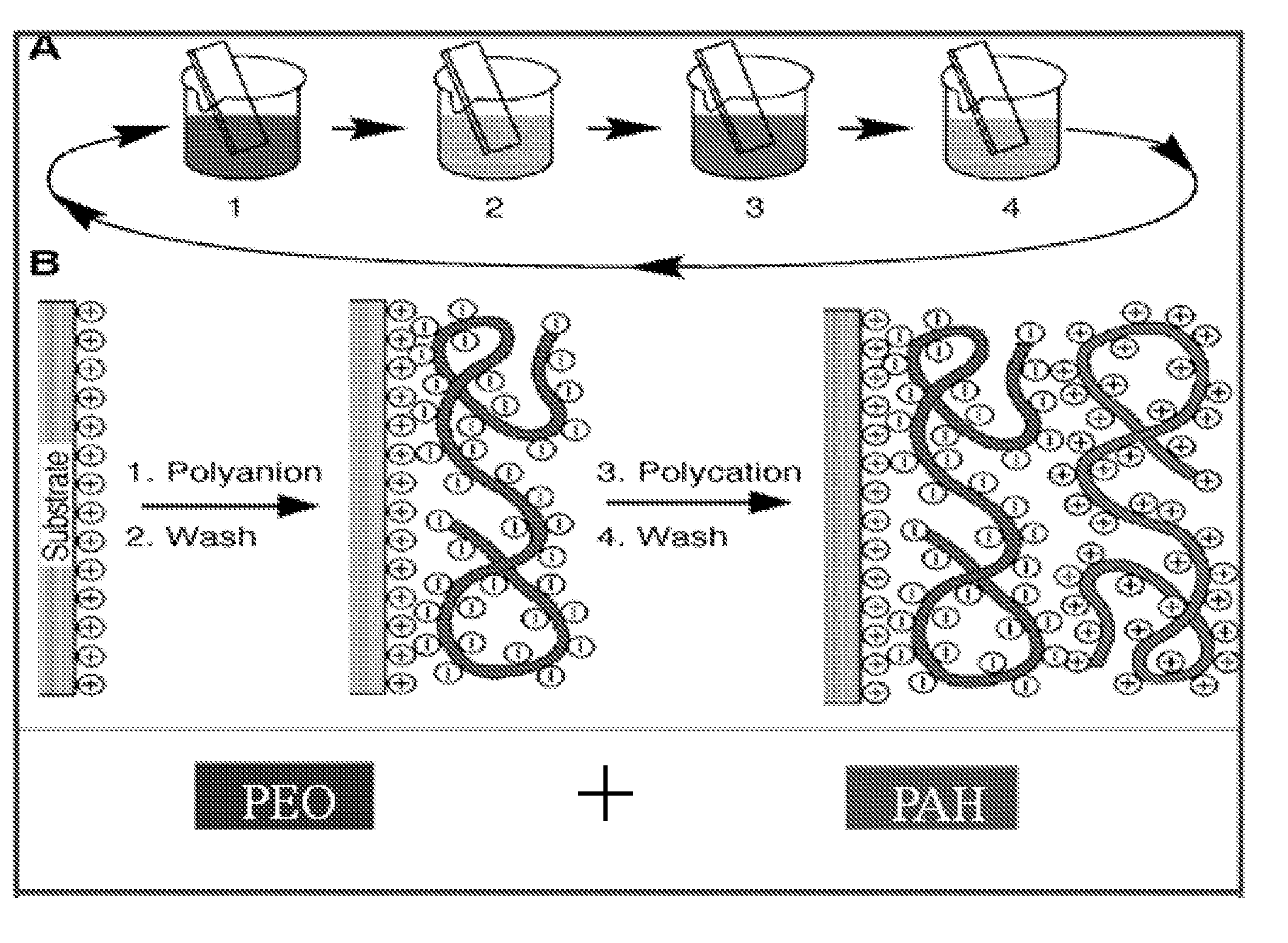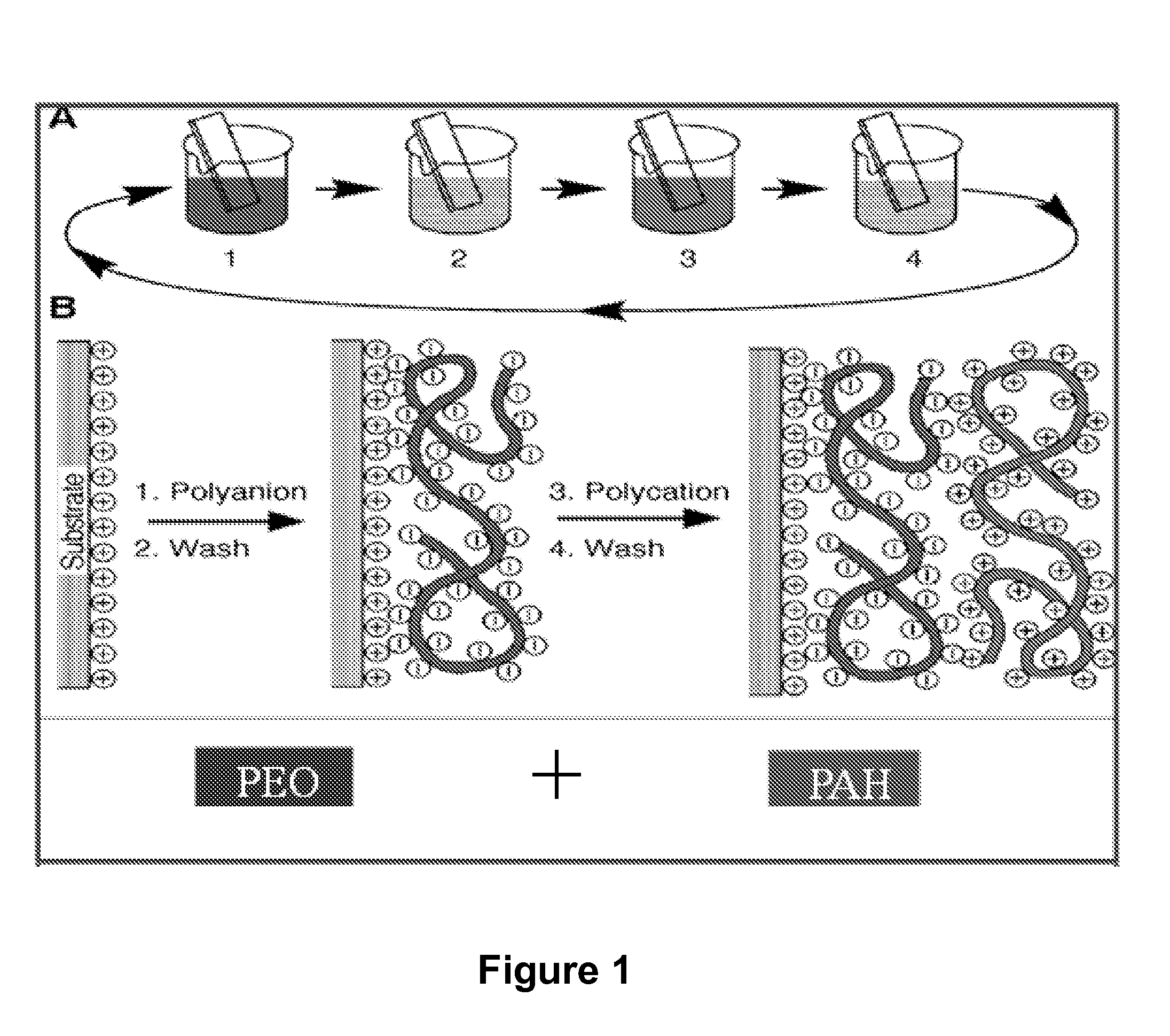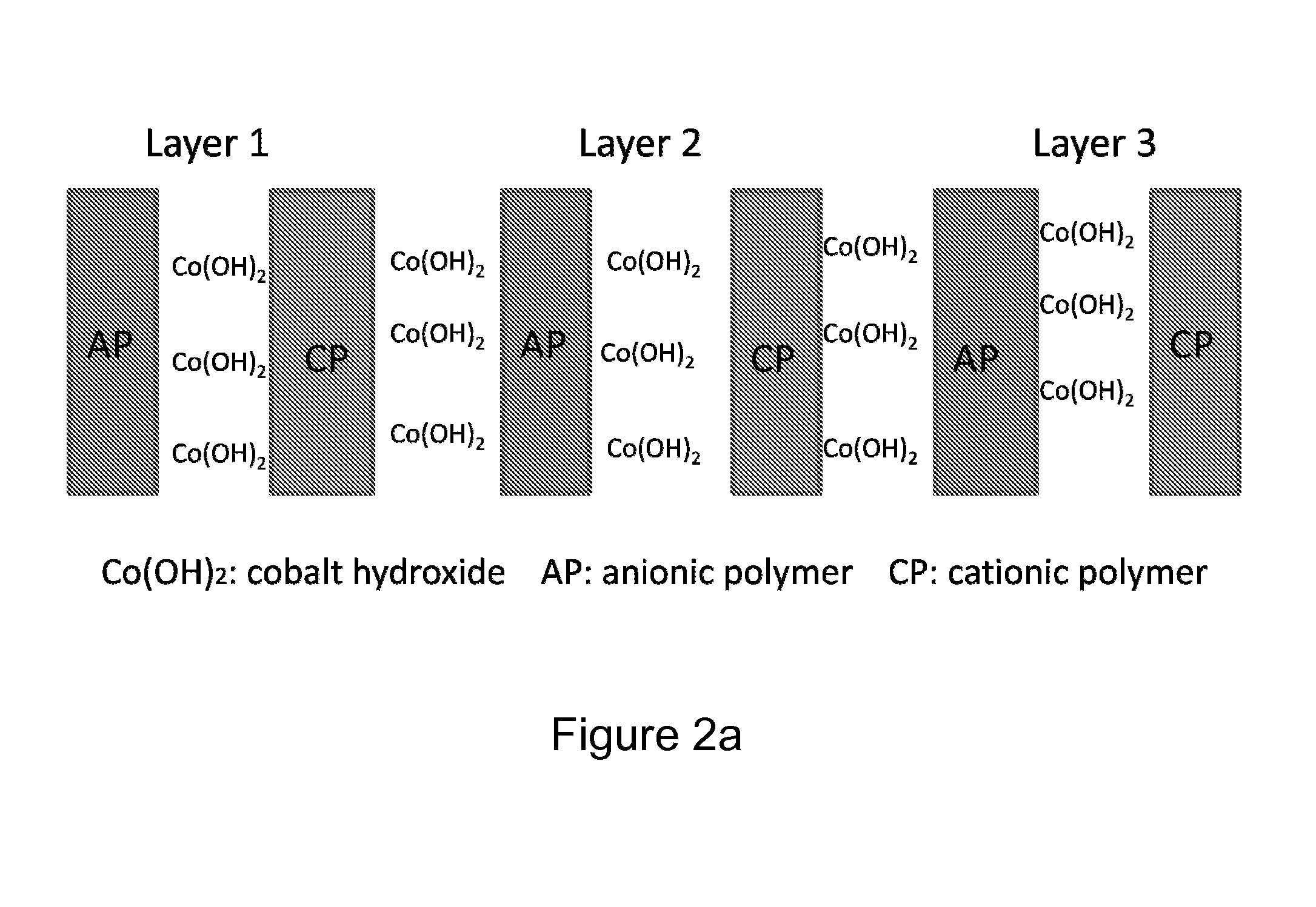Electrochemical Device Electrode Including Cobalt Oxyhydroxide
- Summary
- Abstract
- Description
- Claims
- Application Information
AI Technical Summary
Benefits of technology
Problems solved by technology
Method used
Image
Examples
example 1
Multilayer Film Structures
[0092]Applicants used Decher's method to make multiple (e.g., 20) layers of Poly(Allylamine) Hydrochloride (PAH), Cobalt Hydroxide and Poly(ethylene) Oxide (PEO) film using an LBL machine from StratoSequence VI NanoStrata Inc. The drying process after each layer was performed with forced nitrogen for 10 seconds. Solutions were prepared by dissolving the respective powders in DI water. The composition was shown as PEO: 70 mg / 100 cc; PAH: 100 mg / 100 cc; Cobalt Hydroxide: 200 mg / 100 cc. PEO was supplied by Polysciences, Inc. (catalog number 04030), PAH from Alfa Aesar (stock number 43092) and Cobalt Hydroxide from Alfa Aesar (stock number 12524).
[0093]PEO and PAH polymers were made in dilute solutions having a concentration of 0.01M. A metal substrate, generally aluminum, was immersed in one polymer solution, PEO and then in the solution of DI water. Next the electrode was immersed in the solution of cobalt hydroxide. A DI water rinse was performed before the ...
example 2
In Situ Preparation of the Positive Electrode
[0094]Preparation of lithium cobalt oxide. Because of the thickness of the films, introducing large-sized solid LiCoO2 into the film multilayers is very difficult. An alternative way is to convert the Co(OH)2 inside the film to lithium cobalt oxide, LiCoO2. The apparatus as shown in FIG. 3 was used to perform the conversion. The electrochemical process was performed under an air-tight condition, such as an argon-purged glove box. A test cell was set up with the cathode as copper electrode to which was straddled a sack of copper screen inside which discs of prepared electrodes were enclosed. Metal lithium was used as the anode. The electrolyte used was similar to those in traditional lithium ion batteries. For example, a 50% mix of EC / DMC (Ethylene Carbonate / Dimethyl Carbonate) was used as the solvent. In the solvent 0.1 M LiPF6 was dissolved. A constant current discharge was performed at 3 volts for 2 hours. This voltage is close to the s...
example 3
Determination of Mass and Specific Capacity of LiCoO2
[0097]The mass of LiCoO2 produced during the treatment in the glove box on the electrodes was determined using inductively-coupled plasma (ICP) mass spectrometry. First, the total amount of cobalt on the electrode surface was determined. The X-Ray diffraction pattern among with an analysis using Jade software gives the proportion of the compounds with cobalt in it. The weight of LiCoO2 was determined to be 4.74 micrograms. Then the specific capacity was calculated as shown in the Table 2. As noted below, the mean specific capacity was found as 164 mA-hr per gram. A large standard deviation was σ=46.5 mA-hrs per gram associated with the mean value.
PUM
 Login to View More
Login to View More Abstract
Description
Claims
Application Information
 Login to View More
Login to View More - R&D
- Intellectual Property
- Life Sciences
- Materials
- Tech Scout
- Unparalleled Data Quality
- Higher Quality Content
- 60% Fewer Hallucinations
Browse by: Latest US Patents, China's latest patents, Technical Efficacy Thesaurus, Application Domain, Technology Topic, Popular Technical Reports.
© 2025 PatSnap. All rights reserved.Legal|Privacy policy|Modern Slavery Act Transparency Statement|Sitemap|About US| Contact US: help@patsnap.com



